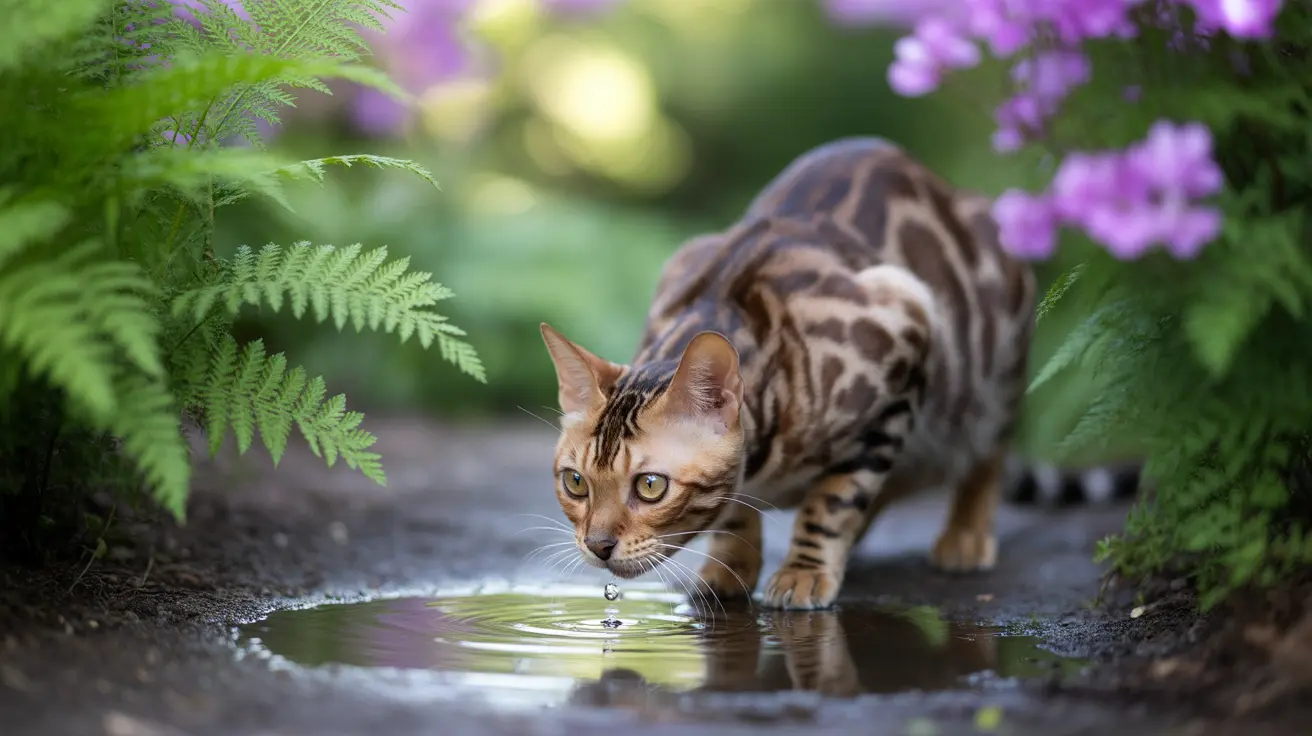If you've ever caught your cat drinking from a muddy puddle or plant saucer despite having fresh water available, you're not alone. This puzzling behavior often concerns cat owners, but there's actually a fascinating mix of instincts and preferences behind why cats drink dirty water.
In this comprehensive guide, we'll explore the various reasons behind this behavior and provide practical solutions to ensure your cat stays properly hydrated while maintaining their safety.
The Evolutionary Drive Behind Dirty Water Preferences
Cats' attraction to dirty water sources stems from their wild ancestors' survival instincts. In nature, running or recently replenished water sources were often safer than stagnant pools, as they contained fewer harmful bacteria and parasites. This ancient wisdom remains encoded in our domestic cats' DNA.
Additionally, wild cats learned to avoid drinking near their kill sites or waste areas, as these locations could harbor dangerous contaminants. This explains why many housecats avoid water bowls placed too close to their food or litter boxes.
The Role of Sensory Appeal
What we perceive as "dirty" water often contains elements that make it more appealing to cats. Moving water, like that in puddles after rain, typically has higher oxygen content and carries more natural scents that cats find attractive. The minerals and organic matter present in outdoor water sources can create an enticing aroma that cats prefer over treated tap water.
Location and Bowl Preferences Matter
Many cats reject their water bowls due to placement or design issues rather than the water itself. Some key factors include:
- Whisker stress from narrow bowls
- Plastic bowls that retain odors
- High-traffic or noisy locations
- Proximity to food or litter boxes
- Competition in multi-cat households
Health Implications and Risks
While cats' attraction to dirty water is natural, it's not without risks. Contaminated water sources can expose your cat to:
- Bacterial infections
- Parasites like Giardia
- Chemical pollutants
- Harmful algae
- Leptospirosis
Any sudden changes in drinking habits or preference for unusual water sources could also indicate underlying health issues that require veterinary attention.
Creating a Cat-Friendly Water Environment
To encourage healthy drinking habits:
- Place multiple water stations throughout your home
- Use wide, shallow ceramic or stainless steel bowls
- Keep water sources away from food and litter areas
- Consider installing a pet water fountain
- Change water daily and clean bowls regularly
Frequently Asked Questions
Why do cats prefer drinking from dirty water sources like puddles or plant trays instead of their clean water bowls?
Cats are drawn to dirty water sources due to evolutionary instincts that associate moving or naturally refreshed water with safety. The presence of minerals and organic matter can also make these sources more appealing to their sensitive noses.
How can I make my cat's water bowl more appealing to stop them drinking dirty water?
Use wide, shallow bowls made of ceramic or stainless steel, place them in quiet locations away from food and litter boxes, and consider adding a pet fountain. Change water frequently and keep bowls meticulously clean.
What is the best place and type of bowl to provide fresh water for my cat to prevent them from seeking dirty water?
The ideal setup includes multiple water stations in quiet areas, using wide bowls that don't trigger whisker fatigue. Ceramic or stainless steel bowls are preferred, and locations should be away from food and litter boxes.
Can drinking dirty water be harmful to my cat's health, and what risks should I watch for?
Yes, dirty water can expose cats to harmful bacteria, parasites, and toxins. Watch for symptoms like vomiting, diarrhea, lethargy, or fever, which could indicate water-borne illness.
When should I be concerned about changes in my cat's drinking habits and consult a vet?
Consult a veterinarian if you notice sudden increases or decreases in water consumption, excessive thirst, or if your cat seems obsessed with unusual water sources, as these could indicate underlying health issues.
By understanding why cats drink dirty water and implementing appropriate solutions, you can help ensure your feline friend stays safely hydrated while respecting their natural instincts.






